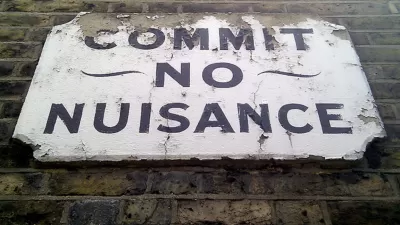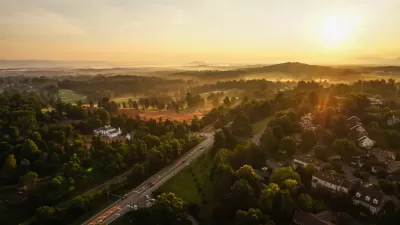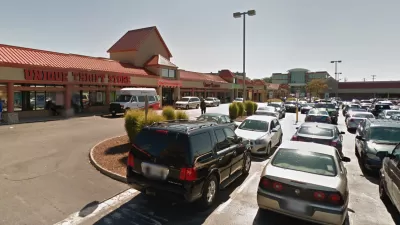The history of how homeowners came to wield expansive power over the development of entire neighborhoods and cities is complex and can't be traced to any one policy or market trend.

Emily Badger explores the rise of the "Not In My Backyard" (NIMBY) movement to power—and its ability to expand its political influence beyond the backyard to the entire neighborhood.
The causes of NIMBY campaigns are familiar. "In Seattle, the neighbors don’t want apartments for formerly homeless seniors nearby," writes Badger. "In Los Angeles, they don’t want more high-rises. In San Jose, Calif., they don’t want tiny homes. In Phoenix, they don’t want design that’s not midcentury modern."
Common among these opposition campaigns is a conviction "that owning a parcel of land gives them a right to shape the world beyond its boundaries," according to Badger, who traces the roots of the idea that the influence of property owners should reach well beyond the property line.
Badger references nuisance laws, schools, race, and advent of citywide zoning in this examination of the exclusionary tendencies of NIMBY campaigns. The article's conclusion is particularly powerful, suggesting how deep a cultural shift will be necessary to disentangle the power of obstructionists from the future needs of cities and communities: "We want people to be invested in their neighborhoods, but not to the exclusion of anyone else who might live there, too. We want to empower neighbors to fight a trash dump, but not to halt every housing project the region needs."
FULL STORY: How ‘Not in My Backyard’ Became ‘Not in My Neighborhood’

Maui's Vacation Rental Debate Turns Ugly
Verbal attacks, misinformation campaigns and fistfights plague a high-stakes debate to convert thousands of vacation rentals into long-term housing.

Planetizen Federal Action Tracker
A weekly monitor of how Trump’s orders and actions are impacting planners and planning in America.

In Urban Planning, AI Prompting Could be the New Design Thinking
Creativity has long been key to great urban design. What if we see AI as our new creative partner?

How Trump's HUD Budget Proposal Would Harm Homelessness Response
Experts say the change to the HUD budget would make it more difficult to identify people who are homeless and connect them with services, and to prevent homelessness.

The Vast Potential of the Right-of-Way
One writer argues that the space between two building faces is the most important element of the built environment.

Florida Seniors Face Rising Homelessness Risk
High housing costs are pushing more seniors, many of them on a fixed income, into homelessness.
Urban Design for Planners 1: Software Tools
This six-course series explores essential urban design concepts using open source software and equips planners with the tools they need to participate fully in the urban design process.
Planning for Universal Design
Learn the tools for implementing Universal Design in planning regulations.
Gallatin County Department of Planning & Community Development
Heyer Gruel & Associates PA
JM Goldson LLC
City of Camden Redevelopment Agency
City of Astoria
Transportation Research & Education Center (TREC) at Portland State University
Jefferson Parish Government
Camden Redevelopment Agency
City of Claremont





























